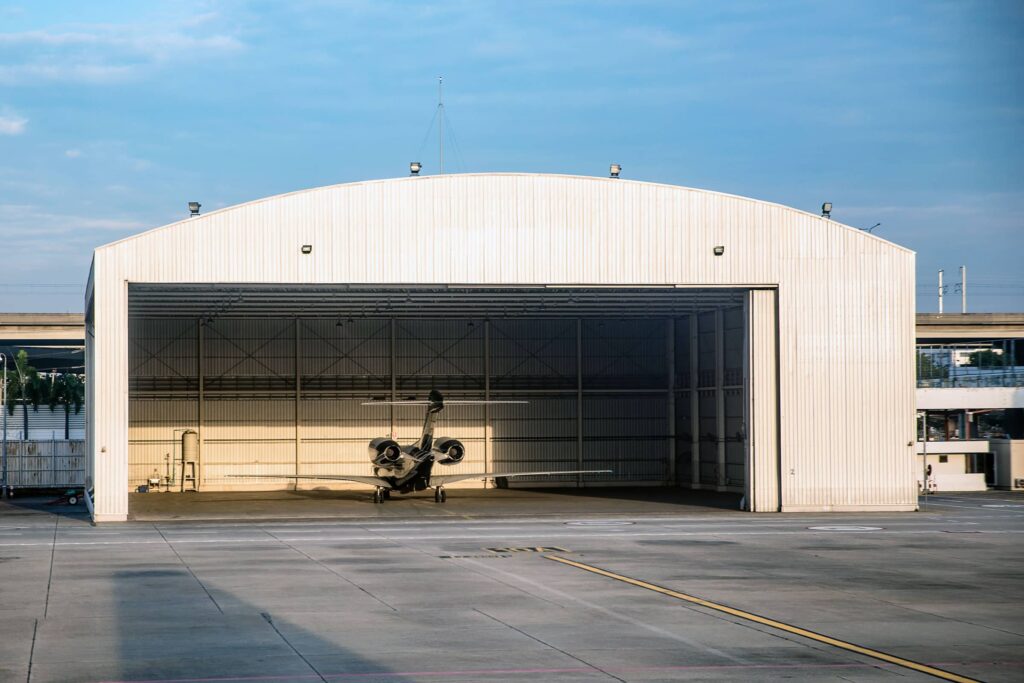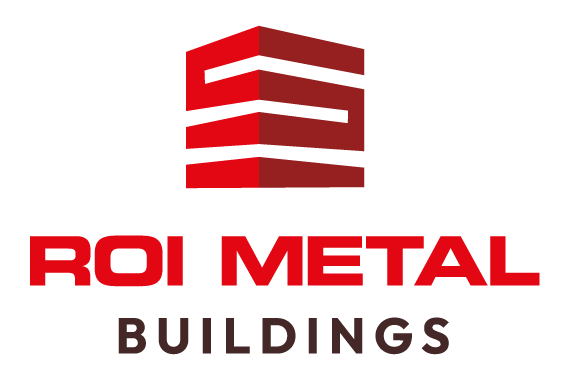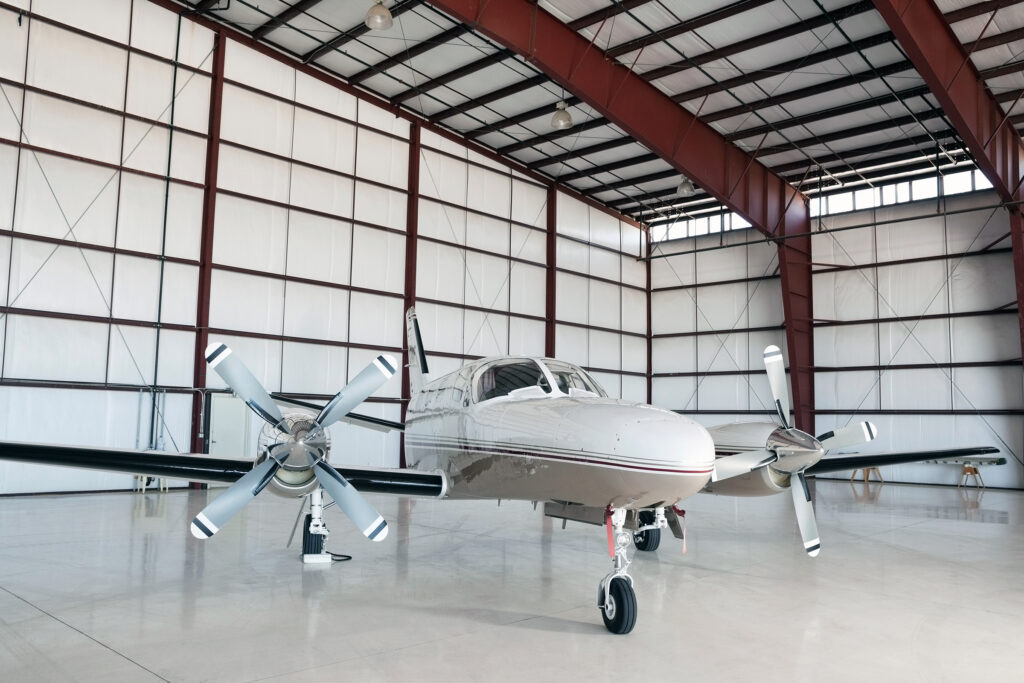When thinking about renting or building an aviation hangar, you might find yourself lost in a swirl of numbers and options. The cost estimates for aviation hangars can seem daunting at first—ranging from hundreds of thousands to millions of dollars—but understanding these expenses can help put you in the pilot’s seat. Navigating through the specifics of size, location, permits, and amenities is essential for making informed decisions. I’m here to walk you through the key factors involved so you can better plan your budget and create a space that meets all your aviation needs without breaking the bank. Let’s gear up and dive into what you need to know to successfully manage these costs!
The cost of constructing a standalone general airplane hangar typically ranges from $60 to $120 per square foot, amounting to approximately $900,000 to $1,800,000 for a standard 15,000 square foot hangar. Renting options vary as well, with monthly lease rates ranging from $850 to $950 for older single aircraft box hangars and between $4,000 to $7,000 for larger jet spaces.
Factors Influencing Aircraft Hangar Construction Costs
The cost of constructing an aviation hangar can seem overwhelming at first glance, but by breaking it down into understandable components, you can have a clearer picture. Beyond location and materials, there are additional influential aspects such as size, utilities, aircraft storage, and compliance with regulations.

About Airplane Hangars
Airplane hangars are specialized structures designed to provide a safe and secure environment for aircraft maintenance, storage, and repair. An airplane hangar, also known as an aircraft hangar, is a large, enclosed building that protects aircraft from the elements and provides a controlled environment for maintenance and repair work. These hangars can range in size from small, single-aircraft structures to large, multi-aircraft facilities, and are typically constructed using steel or other durable materials. Whether you’re a private aircraft owner or a commercial airline, an airplane hangar is an essential investment for protecting your valuable assets. The robust construction of these hangars ensures that your aircraft remains safe from harsh weather conditions, while also providing ample space for necessary maintenance activities.
Size
The size of the hangar you’re looking to build dramatically impacts costs. A larger hangar simply requires more materials and labor, including the construction of four exterior walls, thus increasing the overall cost; thus, a typical small aircraft hangar of about 5,000 square feet could range from $500,000 to possibly over $2 million, depending on specific features and complexity.
For bigger aspirations, such as those reaching 20,000 square feet or more for larger jets, costs could escalate from $2 million to as high as $8 million.
It’s important to think about your future needs during construction. Building a slightly larger hangar than is currently necessary might save you from additional costs associated with expansion later on. You wouldn’t want to find yourself in a position where your hangar is too small just when you need it most.
Utilities and Infrastructure
Planning for utilities is another hidden cost that can significantly alter your budget. Electrical installations typically range between 10-20% of the total construction budget. Adding amenities like heating systems, plumbing, and other equipment can lead to expenses ranging from $20,000 to $100,000 more than anticipated.
Imagine having a beautiful, brand-new hangar only to realize you can’t operate comfortably without these essentials. It’s vital not to overlook these elements during budgeting.
From personal experience, I recommend discussing utility needs early in the design process with builders and understanding how they integrate within your hangar space. Doing this will help ensure that everything runs smoothly once your hangar is operational.
Regulatory Compliance
Zoning laws and local building codes enforced by local authorities can’t be ignored. These regulations vary greatly by municipality, but expect to allocate anywhere from $5,000 up to over $30,000 for necessary permits and compliance measures. Each locality has its own set of requirements that must be met before construction starts, and failing to adhere could incur hefty fines or construction delays.
By carefully evaluating these compliance issues early on, you can avoid headaches later in the process. It pays off to consult with professionals who understand the local landscape.
As you analyze these key factors related to costs in constructing aviation facilities, it’s essential to also consider how the dimensions of the hangar intersect with the types of aircraft it will accommodate.
Hangar Construction
Hangar construction involves several key considerations, including the type of aircraft to be stored, the size and layout of the hangar, and the materials used in construction. A steel airplane hangar is a popular choice for many aircraft owners due to its strength, durability, and flexibility. The construction process typically begins with site preparation, which includes grading the land and laying a solid foundation. Following this, the installation of foundation systems, exterior walls, and roofing takes place. The construction process also involves the installation of hangar doors, electrical and mechanical systems, and other essential components. Experienced teams of architects, engineers, and contractors work together to design and build airplane hangars that meet the unique needs of aircraft owners and operators. By ensuring that every aspect of the construction is meticulously planned and executed, these professionals help create hangars that are both functional and durable.
Building Materials and Codes
The choice of building materials for an airplane hangar is critical, as they must be able to withstand heavy loads, harsh weather conditions, and other environmental factors. Steel is a popular choice for airplane hangars due to its high strength-to-weight ratio, durability, and corrosion resistance. Local building codes and regulations also play a crucial role in determining the design and construction of an airplane hangar. For example, building codes may require hangars to be designed to withstand specific wind and snow loads, or to meet certain standards for fire resistance and electrical safety. By working with experienced designers and contractors, aircraft owners can ensure that their hangar meets all relevant building codes and regulations. This not only guarantees the safety and longevity of the hangar but also ensures compliance with legal requirements, avoiding potential fines and construction delays.
Hangar Doors and Electrical Considerations
Hangar doors are a critical component of any airplane hangar, as they must be able to accommodate the size and type of aircraft being stored. Vertical lift doors, horizontal bifold doors, and other types of doors are commonly used in airplane hangars, depending on the specific needs of the aircraft and the hangar. Electrical considerations are also essential in airplane hangar design, as they must provide power for lighting, heating and cooling systems, and other essential equipment. Computer systems, diagnostic equipment, and other specialized systems may also be required, depending on the type of aircraft being stored and the level of maintenance being performed. By carefully considering these factors, aircraft owners can ensure that their hangar is safe, efficient, and functional. Properly designed hangar doors and electrical systems not only enhance the operational efficiency of the hangar but also contribute to the overall safety and convenience of aircraft maintenance activities.
Environmental Considerations
Airplane hangars must also be designed and constructed with environmental considerations in mind. For example, hangars may be subject to regulations related to stormwater management, hazardous materials storage, and noise abatement. Insulation, temperature control, and other features can help reduce energy bills and minimize the environmental impact of the hangar. Additionally, hangars can be designed to accommodate multiple aircraft, reducing the need for multiple structures and minimizing the overall environmental footprint. By working with experienced designers and contractors, aircraft owners can create an environmentally friendly and sustainable airplane hangar that meets their unique needs and requirements. Incorporating energy-efficient systems and sustainable materials not only benefits the environment but also results in long-term cost savings for aircraft owners.
Size and Aircraft Impact
The size of your hangar plays a significant role in determining not just the initial construction costs, but also your future operational expenses. A general rule of thumb is that the larger the hangar, the higher the price tag per square foot.
For instance, a freestanding hangar can provide a versatile and straightforward solution for various aircraft sizes, impacting both initial and future costs.
For instance, when building a standalone hangar, you can expect to spend between $60 to $120 per square foot. This means a standard 15,000-square-foot hangar could set you back anywhere from $900,000 to $1,800,000. When contemplating such a significant commitment, it’s essential to account for both current needs and potential future growth.
This overview highlights how your choice of size translates into financial implications. As you decide on the dimensions, consider not only what you require at this moment but also what might be necessary down the line. If you anticipate expanding your fleet or enhancing operations—possibly adding service capabilities—a larger hangar may save you money over time by avoiding additional construction expenses later on.
Size and Scaling Costs
Smaller freestanding hangars specifically designed for piston aircraft generally offer more budget-friendly options. They typically range from 5,000 to 7,000 square feet, costing between $300,000 and $700,000. This affordability makes them ideal for individuals or small operators seeking economical solutions.
However, as with any investment in aviation infrastructure, it’s vital to assess whether these smaller spaces will meet your long-term operational requirements. Remember that while initial costs are lower, purchasing too small a hangar may necessitate upgrades sooner than anticipated—resulting in additional expenditure.
As you dive deeper into planning your hangar purchase or rental, always consider how various features impact overall utility and value. Specialized configurations such as climate control or aerospace-grade electrical outlets may increase upfront costs but significantly enhance operational efficiency for specific types of aircraft.
Aircraft Type
Different aircraft impose unique space requirements when it comes to hangar design. For example, housing a small Cessna usually requires far less square footage, and therefore lower costs, than accommodating larger airplanes like a Gulfstream jet.
It’s worth noting that large jets also introduce added complexities; they often necessitate specialized features such as reinforced flooring capable of bearing heavier loads, including high-quality concrete floors, or high-capacity HVAC systems for temperature regulation.
Having a clear understanding of the specific aircraft you plan to store is paramount in guiding your design choices and budgeting decisions effectively.
When planning for your hangar construction or lease agreement, make sure to consult with industry professionals who can help tailor your project according to both current aircraft size as well as any anticipated changes in your aviation needs, a critical factor that can save money and hassle in the long run.
With an understanding of how size and aircraft types influence costs firmly established, we can now shift our focus toward another important aspect of your aviation infrastructure journey: evaluating the intricacies related to design and engineering expenditures.
Design and Engineering Costs
Designing and engineering an aviation hangar is no small feat; it requires a blend of expertise, precision, and an eye for functional creativity. Successfully navigating the building process involves critical steps such as budgeting, planning for materials, and incorporating essential finishing touches like insulation. These factors contribute significantly to the overall construction costs. A typical breakdown shows that engineering fees usually take up about 10-15% of the total construction expenses. This means that if you’re looking at a project with an estimated cost of $1 million, you should budget around $100,000 to $150,000 just for the engineering services.
Engineering Fees
These fees cover essential services such as structural engineering, which ensures the integrity of the hangar’s framework, mechanical engineering for HVAC systems to keep your aircraft and any personnel comfortable, and electrical engineering to plan out efficient power layouts that meet safety standards, including planning for electrical components. Each aspect plays a crucial role in ensuring that your hangar not only meets regulatory requirements but also functions optimally for your operational needs.
But that’s only part of the equation; you’ll also want to think about the custom features that can enhance your hangar’s functionality or aesthetic appeal.
Custom Design Features
When it comes to custom design features, it’s important to remember that while they may add to initial costs, they can greatly enhance usability and efficiency.
Imagine installing a specialized hangar door engineered specifically for your aircraft type; bi-fold hangar doors can range from $15,000 to $30,000 each. While this may seem steep initially, they maximize entry space and provide easier access for larger aircraft, which can save time and reduce risks during operations.
Other custom amenities could include advanced fire suppression systems, which are essential for safety but may add substantial costs. Luxury touchpoints like bespoke offices or lounges also come into play here. Though these additions require sizeable investments upfront, they often translate into long-term value through improved functionality and enhanced comfort for staff.
Overall, it’s vital to thoughtfully assess how much you’re willing to invest in design and engineering. Every dollar spent on quality engineering and strategic design equates to better safety measures, durability, and functionality in the long run. By keeping these aspects central to your planning process, you ensure that your aviation hangar serves its intended purpose efficiently while reflecting your personal or organizational style.
As you explore these costs further, consider how prioritizing quality design and sound engineering establishes a strong foundation for a hangar that is adaptable for future growth as well. The next phase will involve breaking down these expenses in more detail to assist with effective budget planning.
Detailed Cost Breakdown
Understanding the various components that contribute to the overall cost of constructing an aviation hangar is crucial for effective budget planning. Each element carries its own set of expenses, and recognizing these can help you allocate your resources wisely.
For starters, land acquisition fees can vary dramatically based on location, spanning anywhere from $50,000 to $500,000. The premium for a plot near major airports may be worth it for accessibility, but it comes at a higher price. Following land expenses are construction materials like steel, concrete, and wood, which play a significant role in the durability and safety of your hangar.
Key Financial Components
| Component | Cost Range |
|---|---|
| Land | $50,000 – $500,000 |
| Materials (Steel) | $30 – $100 per sq ft |
| Labor | $20 – $50 per sq ft |
| Utilities & Amenities | $20,000 – $100,000 |
| Regulatory Compliance | $5,000 – $30,000 |
| Engineering Fees | 10-15% of total cost |
| Custom Features | $15,000 – $50,000 |
Following land expenses are materials like steel, which play a significant role in the durability and safety of your hangar. Prices range from $30 to $100 per square foot, depending on quality and market fluctuations, and must be able to sustain heavy loads.
Additionally, labor costs can also add up quickly; expect to pay between $20 and $50 per square foot for skilled workers who will ensure your hangar is built to standard.
To enhance the functionality of your hangar further, utilities and amenities deserve special consideration.
Utilities such as electrical systems and HVAC must be factored into your budget, too. The installation alone could run anywhere from $20,000 to $100,000, depending on how extensive the infrastructure needs to be. This is particularly important if you’re planning to use the hangar for maintenance or as a workspace; proper heating and cooling can greatly affect comfort and efficiency.
Alongside these costs are essential regulatory compliance fees that cannot be overlooked.
Adhering to local building codes and zoning regulations is another critical expense that ranges from $5,000 to over $30,000. Failing to meet these requirements may lead to penalties or costly modifications. Moreover, engineering fees, typically ranging from 10% to 15% of the total construction cost, should also be included in your budget calculations for design evaluations and inspections by professionals.
Finally, don’t forget about custom features that can add both functionality and personalized touches to your hangar.
If you’re considering additional features such as specialized doors or advanced security systems, these customizations can wind up costing between $15,000 and $50,000. While they might seem like optional upgrades now, such features can significantly enhance user experience and functional capabilities.
Take some time with this breakdown! After all, no one wants their dream hangar plan grounded because of surprise expenses.
Now that we’ve unraveled the financial intricacies of hangar construction costs, it’s essential to explore the various options available, along with their associated prices.
Different Hangar Types and Prices
When considering aviation hangars, it’s important to understand the specifics of what each type offers. This helps ensure that you’re getting the right fit for your aircraft, operational needs, and budget. Whether you’re looking for a space-efficient for a single small plane or a luxurious suite for your corporate jet, each category has its own unique pricing structure and features.
Another efficient design is the consecutive rectangular hangar, which is ideal for storing multiple aircraft with separate bays for each.
Common Types
First up is the Box Hangar. These are typically the go-to choice for owners of single or small-sized aircraft, providing a straightforward layout with ample protection from the elements. Pricing for these hangars usually ranges from $300,000 to $700,000, depending on size and design specifics. A box hangar is not just a shelter; it can also serve as a workshop or storage area, making it versatile. For instance, if you own a piston aircraft and need extra room for tools or supplies, a box hangar might be ideal.
Moving on from box hangars, there’s another popular option worth examining:
The T-Hangar is designed to provide multiple units in a single row, making them particularly suited for smaller aircraft owners who want proximity to one another. The cost for T-hangars generally hovers around $50 to $100 per square foot, allowing for greater affordability when accommodating several planes. These are ideal if you plan to share space with fellow aviators while still maintaining individual privacy. Just imagine being part of a community where everyone shares tips and experiences over coffee in the morning light filtering through those open doors.
Nested T hangars are another space-efficient design, allowing for more aircraft to be stored in a limited area.
Now, if we step up in scale and luxury:
There are Executive Hangars, crafted to house larger corporate jets or high-end personal planes. These showcase aesthetic finesse alongside functionality, often priced between $1 million to $3 million. They’re tailored with amenities fit for business travelers who expect convenience and luxury. With features like climate control, spacious interiors, and sometimes even office areas attached, executive hangars elevate the experience significantly compared to traditional setups.
Each hangar type provides distinct advantages alongside its unique costs. It’s essential to consider your specific needs—are you an occasional flyer or running a business operation? Do you prioritize storage and maintenance space? Evaluating these factors closely will guide you in selecting the right hangar that aligns perfectly with your financial capacity while effectively serving your aviation requirements.
To effectively navigate these expenses and ensure proper allocation of resources, understanding budgeting strategies can make all the difference in optimizing your investment.
Budget Planning for Hangar Projects
Proper budget planning is key to the successful completion of any hangar project; outlining all potential expenses ahead of time is crucial. To start, it’s important to get a comprehensive understanding of the initial costs associated with your hangar. This includes everything from securing land and purchasing materials to factoring in labor wages. By breaking down these base costs systematically, you can offer a more transparent view of where your funds are allocated, ensuring alignment with the intended use of the hangar.
Step I – Initial Budget Estimation
Begin by calculating base costs that encompass your primary needs—land, materials, and labor expenses. Consider if a business storefront is part of your custom structure. For example, if you’re considering a metal building as one option for your hangar structure, remember that metal buildings often come at a competitive price compared to traditional building methods. Contacting suppliers for estimates not only helps but also builds relationships that will pay off in the long run. Accurately estimating these essential elements allows you to create a solid foundation for your budget.
After calculating the initial costs, it’s crucial to prepare for any unforeseen circumstances that might crop up during construction.
Step II – Allocate for Contingencies
It’s wise to include a contingency fund amounting to about 10-15% of your total estimated budget. This buffer proves invaluable when project scope can often expand beyond initial estimates due to factors like changing regulations or other unanticipated expenses. Choosing low maintenance materials can help mitigate future costs. A well-planned contingency fund can mean the difference between project success and financial strain, so think of it like an insurance policy against surprises.
As you move forward, don’t forget that budgeting doesn’t end once the construction is completed.
Step III – Plan for Maintenance
Factoring in ongoing maintenance costs post-construction is vital to ensure your hangar remains functional and safe over time. Factoring in ongoing maintenance costs post-construction is vital to ensure your hangar remains functional and safe over time, especially if it includes repair facilities. Regular inspections should be scheduled far ahead of time so they fit comfortably within your operational budget; neglecting this could lead to costly repairs down the line. Consider that typical annual maintenance might range from $5,000 to $15,000, depending on the hangar’s size and features. By preparing for these ongoing expenses upfront, you’ll set yourself up for sustainable success. Additionally, keeping good records of inspections and repairs ensures you can track how funds are utilized effectively.
Understanding these foundational elements not only prepares you financially but also strengthens your overall strategy for constructing aviation facilities. Next, we can explore how to make smart choices that keep construction costs down while still ensuring quality and safety.
Cost-Saving Tips for Aircraft Hangar Construction
In constructing an aviation hangar, one of the most effective strategies to save money lies in the use of standard designs. Utilizing steel structures can further enhance cost-efficiency due to their reliability, strength, and design flexibility. Opting for established blueprints rather than creating custom designs can significantly reduce architectural and engineering fees. By sticking to industry-standard dimensions and layouts, you avoid extensive modification costs and simplify the construction process. These designs are often tested for efficiency and functionality, allowing you to achieve both quality and savings without compromise.
Alongside design choices, timing can be a vital factor in keeping costs down.
Consider the simple act of purchasing materials; it’s often wise to buy during off-peak seasons when prices tend to dip. For instance, many suppliers offer discounts on bulk purchases at the end of winter or during slow times in construction. By planning and aligning your material needs with these off-peak periods, you can take advantage of reduced rates, leading to substantial savings throughout the project’s duration.
Another practical tip is exploring the option of pre-fabrication.
Pre-fabricated steel buildings stand out as a cost-effective alternative to bespoke structures primarily due to their quicker assembly and lower overall costs. These structures arrive at your site partially constructed, dramatically reducing labor expenses and time delays associated with traditional builds. Additionally, reduced construction times lessen exposure to weather-related challenges that could delay progress and increase costs. Thus, opting for pre-fabricated solutions not only provides financial relief but also contributes to timely project completion.
By employing these cost-saving measures throughout your hangar project—using standard designs, purchasing materials wisely, and considering pre-fabrication—you can realize significant savings while achieving a high-quality build that meets all aviation requirements. Each decision you make plays a crucial role in maintaining your budget while ensuring functionality and durability for years to come.
To begin your journey toward building an efficient aviation hangar, call RoI Metal Buildings at 865-316-9009 or visit us at RoI Metal Buildings.




